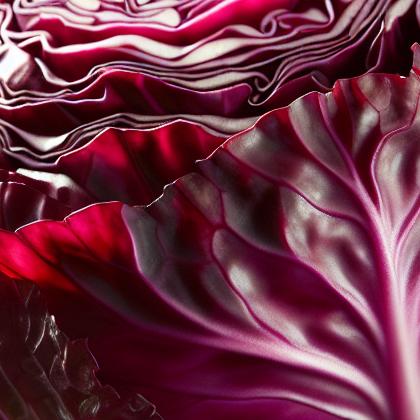Red Cabbage

The red cabbage (Brassica oleracea var. capitata f. rubra) is a kind of cabbage, also known as purple cabbage, red kraut, or blue kraut after preparation. Its leaves are coloured dark red/purple. However, the plant changes its colour according to the pH value of the soil, due to a pigment belonging to anthocyanins (flavins). In acidic soils, the leaves grow more reddish, in neutral soils they will grow more purple, while an alkaline soil will produce rather greenish-yellow coloured cabbages. This explains the fact that the same plant is known by different colours in various regions. Furthermore, the juice of red cabbage can be used as a home-made pH indicator, turning red in acid and green/yellow in basic solutions. It can be found in Northern Europe, throughout the Americas, and in China.
Red Cabbage Pairs With:

Red Cabbage Properties:
| Food Property | Type | Description |
|---|---|---|
| Flavor Profile | Sweet | Red cabbage has a slightly sweet flavor. |
| Sour | Red cabbage has a mildly tangy and sour taste. | |
| Bitter | Red cabbage can have a hint of bitterness, especially when overcooked. | |
| Texture | Firmness | Red cabbage is firm and crunchy when raw, but becomes tender when cooked. |
| Moisture | Red cabbage has a high water content, resulting in a moist texture when cooked. | |
| Nutritional Value | Fiber | Red cabbage is a good source of dietary fiber, which is beneficial for digestion. |
| Micronutrients | Red cabbage is rich in vitamins and minerals, including vitamin C and vitamin K. | |
| Color | Natural Pigments | Red cabbage gets its vibrant purple color from natural pigments called anthocyanins. |
| Aroma | Volatile Compounds | Red cabbage can emit a strong smell when cooked, which is due to volatile compounds released during the cooking process. |
| Chemical Composition | Acidity/Alkalinity (pH) | Red cabbage has a slightly acidic pH level, which can contribute to its tangy flavor profile. |
Food Pairing App - Version 1.2.0
